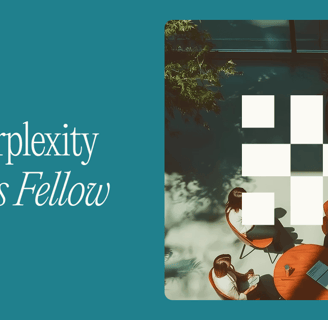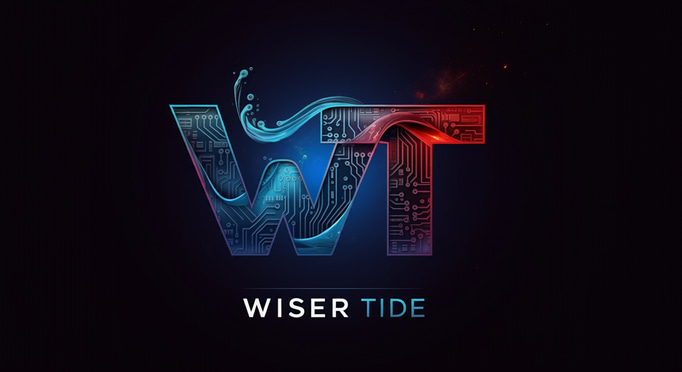Part II: The Action Plan – How People and AI Can Work Together
Designing the Perfect Human-AI Team
AI IN BUSINESS
Konrad Pazik
6/28/202516 min read
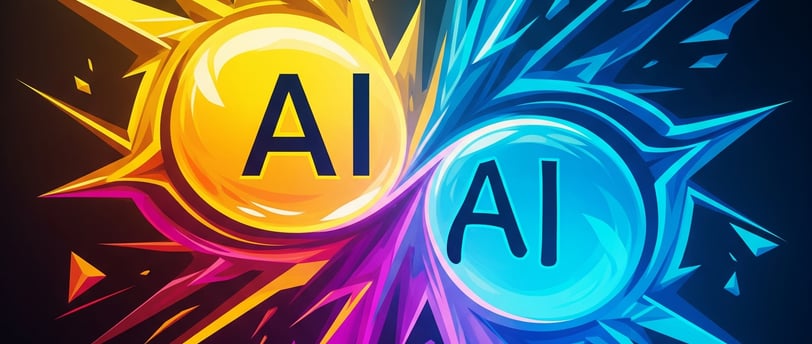

Part II: The Action Plan – How People and AI Can Work Together
Designing the Perfect Human-AI Team
When bringing AI into any workplace, the most important decision we’ll make is how people and AI will work together. There’s no single right answer; the best setup depends on the task. Thinking about this from the start is the key to success. We need to move beyond just automating tasks and start designing true human-AI partnerships. There are three main ways we can set up this collaboration: Human-in-the-Loop (HITL), Human-on-the-Loop (HOTL), and Human-in-Command (HIC).
Think of these as a spectrum, from lots of human control to more AI independence:
Human-in-the-Loop (HITL): The AI Needs Permission. In this model, the AI does its work but has to stop at a key moment and get a green light from a person before it can finish. The human is a required step in the process. This is best when you need to be absolutely sure everything is perfect and accountable, even if it’s a bit slower.
Real-World Examples: An AI in a hospital might analyse a medical scan and highlight a potential problem, but a doctor must review it and make the final diagnosis. In a bank, an AI might flag a strange transaction, but a human has to investigate it before it’s blocked.
Human-on-the-Loop (HOTL): The Human is a Supervisor. Here, the AI works on its own most of the time, but a person is watching over its shoulder. The human can step in to take over, correct a mistake, or handle a tricky situation the AI doesn’t understand. This model gives you the speed of automation with the safety of human oversight.
Real-World Examples: On social media, an AI might automatically remove obvious spam, but it will flag borderline content for a human moderator to decide on. An AI could process standard company invoices automatically but send any with missing information or unusually large amounts to a person for a closer look.
Human-in-Command (HIC): The Human is the Pilot. In this setup, the AI is a powerful and sophisticated tool, but it’s under the direct and constant control of a person. This is essential for high-stakes situations where things can change in an instant and human judgement is everything.
Real-World Examples: A surgeon using a robotic arm to perform a delicate operation. The robot gives them incredible precision, but the surgeon is in complete control of its every move. An airline pilot using an advanced autopilot system. The system flies the plane, but the pilot is always in command, monitoring everything and ready to take over instantly.
Choosing to build these kinds of partnerships brings huge benefits. It leads to better, more accurate results, because you get the AI’s power to process huge amounts of data combined with a human’s common sense and understanding of context. It’s a vital way to prevent unfairness and bias, with a person acting as the final check. It also helps the AI get smarter over time; every time a human makes a correction, the AI learns from it, which is a process called active learning. And crucially, seeing that people are still involved helps everyone—employees and customers—to trust the technology, which is so important in areas like healthcare and finance.
So, how do you choose the right model for the right task? The key is to think about two things: how big is the risk if something goes wrong, and how complicated or uncertain is the task? Here’s a simple guide to help make that choice.
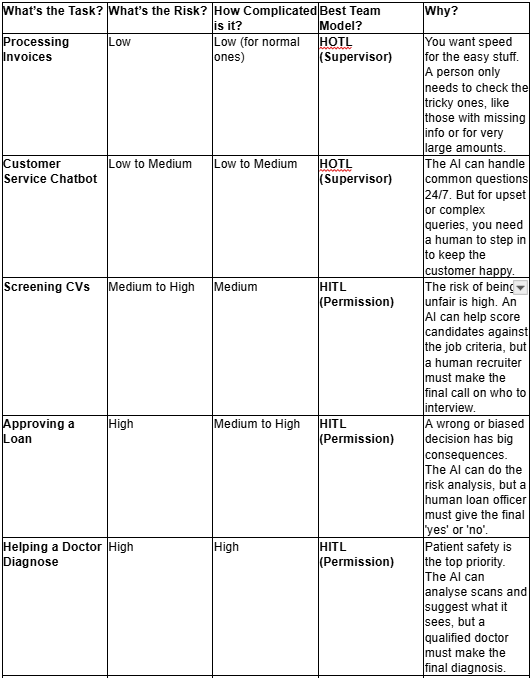

By thinking through tasks in this way, leaders can create a smart plan for human-AI collaboration. It ensures that we use our most valuable resource—our people and their judgement—in the places where they matter most, giving us the best of both worlds: the power of AI and the wisdom of people.
The People Engine: Growing Skills for an AI-Powered Future
At its heart, bringing AI into a company is all about people. The goal isn’t to replace them, but to give them superpowers by pairing their skills with AI’s capabilities. To do this, we need to invest in helping everyone learn and grow. This means building two types of skills at the same time: the technical skills to work with AI, and the uniquely human "power skills" that AI can’t copy. If we have amazing AI tools but nobody knows how to use them well, we won’t get very far.
A great training programme for the age of AI needs a clear plan. Here’s an eight-step guide to help any organisation transform its workforce for the better :
Figure Out What Skills You Need: First things first, you need to know where you stand. Do a "skills audit" to see what skills your team already has and where the gaps are. This isn’t just about technical skills like data analysis; it’s also about human skills like critical thinking and teamwork, which become even more important when working with AI.
Offer Different Ways to Learn: Everyone learns differently. A good programme will mix things up with interactive tasks, videos you can watch at your own pace, quizzes, and hands-on practice with AI tools. This keeps people engaged and helps them remember what they’ve learned.
Make Learning Relevant: Training is much more effective when people can see how it helps them in their own job. Create different learning paths for different roles. For example, marketers will learn about AI for creating personalised ads, while finance teams will learn about AI for spotting fraud. This makes learning feel personal and valuable.
Learn on the Job: The best way to learn is by doing. Build training into everyday work, so people can try out new AI tools on real projects. This helps skills stick without taking people away from their jobs for long periods.
Learn from Each Other: Create a culture where people share what they know. Set up mentoring programmes or online groups where colleagues can help each other, share tips, and solve problems together. This is a brilliant way to spread knowledge quickly.
Use AI to Help People Learn: You can use AI to make your training programmes even better! AI-powered learning platforms can create a personalised learning plan for every single employee, see where they’re struggling, and suggest extra help. This is a great way to offer high-quality training to everyone.
Focus on Both Upskilling and Reskilling: These two words sound similar but are slightly different. Upskilling is about helping people get better at their current job by learning to use new AI tools. Reskilling is about preparing people for a completely new job that might be created because of AI. A great strategy does both at the same time.
Keep Track and Keep Improving: A training programme should never stand still. Keep an eye on how it’s going by looking at things like completion rates and how much people’s skills are improving. Use this feedback to make the programme even better over time.
When you do all this, you end up with a team that has a fantastic mix of skills, ready for whatever the future holds. You can think of it as building two sets of skills that are equally important.
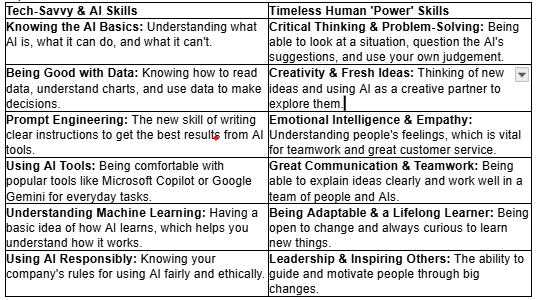

A common mistake is to try and turn everyone into a data scientist. That’s not the goal. The real magic happens when you create "T-shaped" people. The vertical part of the 'T' is their deep knowledge in their own field—like accounting, marketing, or law. The horizontal part is their new ability to use AI tools in that field. An accountant who learns to use AI to spot fraud is far more valuable than one who just takes a generic "Intro to AI" course. This is why training needs to be specific to people's jobs. By focusing on building these "T-shaped" skills, you’re making a smart investment that will pay off in a big way, with a team that is more productive, more innovative, and ready for an exciting future.
Leading the Way: A Friendly Guide to Embracing Change
Bringing AI into a company isn’t just about plugging in new technology. It’s about people. It’s a journey of change, and like any journey, it needs a good guide. The best AI system in the world won’t be much use if the people who need to use it are feeling scared, resistant, or unprepared. That’s why helping people through this change is the most important part of any AI plan.
The evidence is overwhelming: a successful AI project is all about managing the human side of things. Companies that only focus on the tech and forget about the people often run into problems, with nobody wanting to use the new tools and none of the amazing benefits being realised.
A brilliant way to think about this is the Prosci ADKAR® Model. It’s a tried-and-tested guide that breaks down any successful change into five simple, human steps. Using this model gives leaders a clear and friendly playbook to help their teams feel confident and excited about working with AI.
Awareness of why the change is happening. The first step is to answer the big question: "Why?" If people don’t understand why AI is being introduced, they’ll naturally see it as something to be worried about.
What Leaders Can Do: Leaders need to share a clear and positive story about AI. This story should be told often and honestly. It’s crucial to frame AI as a helpful partner that will free people from boring tasks so they can focus on more creative and interesting work, not as something that’s here to replace them. It’s about talking openly about the fears people have and showing them an exciting vision for the future.
Desire to be part of the change. Knowing "why" isn't enough; people need to want to get involved. This is about answering the personal question: "What's in it for me?"
What Leaders Can Do: Get people involved right from the start! Ask for their ideas and give them a sense of ownership. Show them how AI will make their own day-to-day work better, like by automating the tedious job of filling out reports. Find and celebrate your "AI champions"—enthusiastic people at every level who can inspire their colleagues and build excitement from the ground up.
Knowledge of how to change. Once people are on board, they need the "how-to." This means giving them the skills and knowledge to feel confident in this new way of working.
What Leaders Can Do: This is where the workforce transformation plan from the last section comes in. It’s time to invest in great, role-specific training that gives people the AI skills they need to use the new tools with confidence.
Ability to use those new skills. Knowing how to do something is different from being able to do it well in your daily job. People need practice.
What Leaders Can Do: Create a safe space for people to experiment. Let them play around with the new AI tools, make mistakes, and learn without feeling scared of getting it wrong. A great way to do this is to start with small pilot programmes. This lets teams build their confidence and score some early wins, which builds momentum for everyone else. Ongoing coaching and support are also key here.
Reinforcement to make the change stick. New habits won’t last without encouragement and support.
What Leaders Can Do: Weave the new way of working into the company’s culture. Publicly celebrate people and teams who are doing amazing things with AI and encourage them to share their tips. Celebrate every success, big or small, to create a positive vibe and show that this new approach is here to stay. And keep asking for feedback to make things even better.
While encouraging all this positive experimentation, it’s also important to have clear "guardrails." A simple policy that outlines how to use AI responsibly and what not to do creates a "safe sandbox" for people to play in. It gives them the freedom to explore AI’s potential while protecting the organisation from any risks.
This whole approach is the perfect antidote to AI anxiety. Each step directly addresses a common fear. Awareness replaces uncertainty with a clear vision. Desire changes the story from fear of job loss to excitement about personal growth. Knowledge and Ability fight feelings of being left behind by giving people the skills and confidence they need. And Reinforcement shows that the company is truly committed to this new, collaborative future. By following this guide, leaders can turn what could be a scary change into an exciting and empowering adventure for everyone.
Works cited
1. Economic potential of generative AI - McKinsey, https://www.mckinsey.com/capabilities/mckinsey-digital/our-insights/the-economic-potential-of-generative-ai-the-next-productivity-frontier 2. AI in the workplace: A report for 2025 - McKinsey, https://www.mckinsey.com/capabilities/mckinsey-digital/our-insights/superagency-in-the-workplace-empowering-people-to-unlock-ais-full-potential-at-work 3. AI Disruption: 9 in 10 Workers Fear Job Loss to Automation - Resume-Now, https://www.resume-now.com/job-resources/careers/ai-disruption-report 4. EY research shows most US employees feel AI anxiety, https://www.ey.com/en_us/newsroom/2023/12/ey-research-shows-most-us-employees-feel-ai-anxiety 5. Assessing the Effect of Artificial Intelligence Anxiety on Turnover Intention: The Mediating Role of Quiet Quitting in Turkish Small and Medium Enterprises, https://pmc.ncbi.nlm.nih.gov/articles/PMC11939379/ 6. (PDF) AI Anxiety: A Comprehensive Analysis of Psychological Factors and Interventions, https://www.researchgate.net/publication/374092896_AI_Anxiety_A_Comprehensive_Analysis_of_Psychological_Factors_and_Interventions 7. Why human-centric strategies are vital in the AI era | World Economic Forum, https://www.weforum.org/stories/2025/01/leading-with-purpose-why-human-centric-strategies-are-vital-in-the-ai-era/ 8. Bain at WEF 2025: Implementation Gap as AI Investment Surges | Technology Magazine, https://technologymagazine.com/articles/bain-at-wef-2025-implementation-gap-as-ai-investment-surges 9. AI Adoption Challenges and How to Navigate Them - Bizagi, https://www.bizagi.com/en/blog/ai-adoption-challenges 10. The Importance of Change Management in AI Transformation - Consultport, https://consultport.com/business-transformation/importance-of-change-management-in-ai-transformation/ 11. 9 Ethical AI Principles For Organizations To Follow - Cogent Infotech, https://www.cogentinfo.com/resources/9-ethical-ai-principles-for-organizations-to-follow 12. What Is AI Transparency? - IBM, https://www.ibm.com/think/topics/ai-transparency 13. What is AI compliance? Ensuring Trust and Ethical Practices - TalentLMS, https://www.talentlms.com/blog/ai-compliance-considerations/ 14. Can AI Be a Force for Good in Ethics and Compliance? - GAN Integrity, https://www.ganintegrity.com/resources/blog/can-ai-be-a-force-for-good-in-ethics-and-compliance/ 15. AI Ethics in the Enterprise: Risk Management and Value Creation - AI Today, https://aitoday.com/ai-models/ai-ethics-in-the-enterprise-risk-management-and-value-creation/ 16. Post #5: Reimagining AI Ethics, Moving Beyond Principles to ..., https://www.ethics.harvard.edu/blog/post-5-reimagining-ai-ethics-moving-beyond-principles-organizational-values 17. Steps to Build an AI Ethics Framework - A&MPLIFY, https://www.a-mplify.com/insights/charting-course-ai-ethics-part-3-steps-build-ai-ethics-framework 18. Ethics of Artificial Intelligence | UNESCO, https://www.unesco.org/en/artificial-intelligence/recommendation-ethics 19. AI principles | OECD, https://www.oecd.org/en/topics/ai-principles.html 20. Examples of Responsible AI and Its Real-World Applications - Convin, https://convin.ai/blog/responsible-ai 21. What is AI transparency? A comprehensive guide - Zendesk, https://www.zendesk.com/blog/ai-transparency/ 22. Responsible AI: Key Principles and Best Practices - Atlassian, https://www.atlassian.com/blog/artificial-intelligence/responsible-ai 23. Artificial Intelligence Ethics Framework for the Intelligence Community - INTEL.gov, https://www.intelligence.gov/ai/ai-ethics-framework 24. The importance of human-centered AI | Wolters Kluwer, https://www.wolterskluwer.com/en/expert-insights/the-importance-of-human-centered-ai 25. Human-Centered AI: What Is Human-Centric Artificial Intelligence?, https://online.lindenwood.edu/blog/human-centered-ai-what-is-human-centric-artificial-intelligence/ 26. Understanding Explainable AI: Key Concepts of Transparency and Explainability - dida Machine Learning, https://dida.do/ai-explainability-and-transparency-what-is-explainable-ai-dida-ml-basics 27. AI transparency vs. AI explainability: Where does the difference lie? - TrustPath, https://www.trustpath.ai/blog/ai-transparency-vs-ai-explainability-where-does-the-difference-lie 28. How to Create AI Transparency and Explainability to Build Trust - Shelf.io, https://shelf.io/blog/ai-transparency-and-explainability/ 29. Addressing Transparency & Explainability When Using AI Under Global Standards - Mayer Brown, https://www.mayerbrown.com/-/media/files/perspectives-events/publications/2024/01/addressing-transparency-and-explainability-when-using-ai-under-global-standards.pdf%3Frev=8f001eca513240968f1aea81b4516757 30. Ethical AI Uncovered: 10 Fundamental Pillars of AI Transparency - Shelf.io, https://shelf.io/blog/ethical-ai-uncovered-10-fundamental-pillars-of-ai-transparency/ 31. Building trust in AI: A practical approach to transparency - OECD.AI, https://oecd.ai/en/wonk/anthropic-practical-approach-to-transparency 32. Responsible AI Transparency Report | Microsoft, https://cdn-dynmedia-1.microsoft.com/is/content/microsoftcorp/microsoft/msc/documents/presentations/CSR/Responsible-AI-Transparency-Report-2024.pdf 33. Biases in Artificial Intelligence: How to Detect and Reduce Bias in AI ..., https://onix-systems.com/blog/ai-bias-detection-and-mitigation 34. AI Governance Guide: Implementing Ethical AI Systems - Kong Inc., https://konghq.com/blog/learning-center/what-is-ai-governance 35. The Ultimate Guide to AI Transparency - Number Analytics, https://www.numberanalytics.com/blog/ultimate-guide-to-ai-transparency 36. The Challenges of Artificial Intelligence Adoption and Regulatory Compliance - Ethico, https://ethico.com/blog/the-challenges-of-artificial-intelligence-adoption-and-regulatory-compliance/ 37. AI Bias Mitigation: Detecting Bias in AI Models and Generative Systems - Sapien, https://www.sapien.io/blog/bias-in-ai-models-and-generative-systems 38. Responsible AI Development: Bias Detection and Mitigation Strategies - Agiliway, https://www.agiliway.com/responsible-ai-development-bias-detection-and-mitigation-strategies/ 39. AI Bias 101: Understanding and Mitigating Bias in AI Systems - Zendata, https://www.zendata.dev/post/ai-bias-101-understanding-and-mitigating-bias-in-ai-systems 40. Mitigating Bias in Artificial Intelligence - Berkeley Haas, https://haas.berkeley.edu/wp-content/uploads/UCB_Playbook_R10_V2_spreads2.pdf 41. Guide to Optimizing Human AI Collaboration Systems - DeepScribe, https://www.deepscribe.ai/resources/optimizing-human-ai-collaboration-a-guide-to-hitl-hotl-and-hic-systems 42. Human-in-the-loop - Wikipedia, https://en.wikipedia.org/wiki/Human-in-the-loop 43. Human-In-The-Loop: What, How and Why | Devoteam, https://www.devoteam.com/expert-view/human-in-the-loop-what-how-and-why/ 44. What Is Human-in-the-Loop? - MetaSource, https://www.metasource.com/document-management-workflow-blog/what-is-human-in-the-loop/ 45. How Can Human-in-the-loop Help In Business Growth? - Opporture, https://www.opporture.org/thoughts/how-can-hitl-help-in-business-growth/ 46. What is Human-in-the-Loop (HITL) in AI & ML - Google Cloud, https://cloud.google.com/discover/human-in-the-loop 47. Human-in-the-Loop (HITL) AI: What It Is, Why It Matters, and How It Works | YourGPT, https://yourgpt.ai/blog/general/human-in-the-loop-hilt 48. Human in the Loop: Keeping Up-to-Date with the AI Landscape - WSI World, https://www.wsiworld.com/blog/human-in-the-loop-keeping-up-to-date-with-the-ai-landscape 49. Reskilling in the Age of AI: How to Future-Proof Your Workforce, https://www.workhuman.com/blog/reskilling-in-the-age-of-ai/ 50. How to Keep Up with AI Through Reskilling - Professional & Executive Development, https://professional.dce.harvard.edu/blog/how-to-keep-up-with-ai-through-reskilling/ 51. Upskilling the Workforce: Strategies for 2025 Success - Aura Intelligence, https://blog.getaura.ai/upskilling-the-workforce-guide 52. The reskilling roadmap: Navigating evolving human, AI roles in the workplace, https://www.chieflearningofficer.com/2025/01/17/the-reskilling-roadmap-navigating-evolving-human-ai-roles-in-the-workplace/ 53. Reskilling and Upskilling Your Workforce Through AI & Automation, https://www.customercontactweek.com/team-ccw/blog/reskilling-upskilling/ 54. AI Adoption: Driving Change With a People-First Approach - Prosci, https://www.prosci.com/blog/ai-adoption 55. 10 Common Challenges to AI Adoption and How to Avoid Them - Naviant, https://naviant.com/blog/ai-challenges-solved/ 56. AI in Change Management: Early Findings - Prosci, https://www.prosci.com/blog/ai-in-change-management-early-findings 57. Using Change Management To Drive Effective AI Adoption In Marketing Organizations, https://nowspeed.com/blog/using-change-management-to-drive-effective-ai-adoption-in-marketing-organizations/ 58. What is Human-Centric AI? An Empathetic Approach to Tech [2024] - Asana, https://asana.com/resources/what-is-human-centric-ai 59. AI Change Management – Tips To Manage Every Level of Change | SS&C Blue Prism, https://www.blueprism.com/resources/blog/ai-change-management/ 60. How to Use Human-Centric AI in the Workplace: The Ultimate Guide - ClickUp, https://clickup.com/blog/human-centric-ai/ 61. Change Management: The Hidden Hurdle of AI Adoption | Blog - Artos AI, https://www.artosai.com/blog/change-management-the-hidden-hurdle-of-ai-adoption 62. AI Governance Frameworks: Guide to Ethical AI Implementation - Consilien, https://consilien.com/news/ai-governance-frameworks-guide-to-ethical-ai-implementation 63. AI governance: What it is, why it matters, and how to implement it | OneAdvanced, https://www.oneadvanced.com/resources/a-guide-to-mastering-ai-governance-for-business-success/ 64. Playbook - NIST AIRC - National Institute of Standards and Technology, https://airc.nist.gov/airmf-resources/playbook/ 65. An AI Risk Management Framework for Enterprises - Galileo AI, https://galileo.ai/blog/ai-risk-management-strategies 66. AI Governance Framework: Implement Responsible AI in 8 Steps - FairNow's AI, https://fairnow.ai/free-ai-governance-framework/ 67. AI Governance: Key Principles for Responsible Innovation - Brainsell, https://www.brainsell.com/blog/ai-governance-key-principles-for-responsible-innovation/ 68. AI Governance: Develop in 4 Steps and Mitigate Risks - Neudesic, https://www.neudesic.com/blog/four-steps-ai-governance-framework/ 69. Bridging the AI Risk Governance Gap: A Compliance-Focused Playbook - RadarFirst, https://www.radarfirst.com/blog/ai-risk-governance-compliance-playbook/ 70. AI Risk Management Playbook - Medium, https://medium.com/@tahirbalarabe2/ai-risk-management-playbook-abd0aae673ed 71. Generative AI Risk Management Playbook | Publicis Sapient, https://www.publicissapient.com/insights/generative-ai-risk-management-playbook 72. How to Form an AI Ethics Board for Responsible AI Development - Shelf.io, https://shelf.io/blog/how-to-form-an-ai-ethics-board-for-responsible-ai-development/ 73. (PDF) How to design an AI ethics board - ResearchGate, https://www.researchgate.net/publication/378239309_How_to_design_an_AI_ethics_board 74. Ten steps to creating an AI policy | Corporate Governance | CGI, https://www.thecorporategovernanceinstitute.com/insights/guides/creating-an-ai-policy/ 75. Principles for Responsible AI Innovation Organizational Roadmap - UNICRI, https://unicri.org/sites/default/files/2024-02/03_Organizational_Roadmap_Feb24.pdf 76. How do we make AI more human-centric? - KPMG International, https://kpmg.com/xx/en/our-insights/ai-and-technology/how-do-we-make-ai-more-human-centric.html 77. 5 Ways Companies are Incorporating AI Ethics - Drata, https://drata.com/blog/ways-companies-are-incorporating-ai-ethics 78. Best Practice: Transparency in AI Use - Generative AI Solutions Hub, https://genai.illinois.edu/best-practice-transparency-in-ai-use/ 79. AI Report Generator - Annual Report Design (+Templates) - Storydoc, https://www.storydoc.com/report-maker 80. How Geisinger uses robotics and AI to improve care, find value, https://www.ama-assn.org/practice-management/digital-health/how-geisinger-uses-robotics-and-ai-improve-care-find-value 81. Leveraging Technology and Value-Based Care | Case Study: Geisinger Health System - American Medical Association, https://www.ama-assn.org/system/files/future-health-case-study-geisinger.pdf 82. Geisinger uses AI to boost its value-based care efforts | American Medical Association, https://www.ama-assn.org/practice-management/payment-delivery-models/geisinger-uses-ai-boost-its-value-based-care-efforts 83. Artificial Intelligence - Steele Institute for Health Innovation - Geisinger, https://www.geisinger.org/innovation-steele-institute/innovative-partners/ai 84. 10 Case Studies: Humans + AI in Professional Services - Humans + AI, https://humansplus.ai/insights/10-case-studies-humans-ai-in-professional-services/ 85. Bain & Company enhances leadership of its digital practices—AI, Insights, and Solutions and Enterprise Technology—amid high client demand, https://www.bain.com/about/media-center/press-releases/2024/bain--company-enhances-leadership-of-its-digital-practicesai-insights-and-solutions-and-enterprise-technologyamid-high-client-demand/ 86. KPMG Advances AI Integration in KPMG Clara Smart Audit Platform, https://kpmg.com/us/en/media/news/kpmg-clara-smart-audit-platform.html 87. KPMG Further Integrates AI Agents Into Its Audit Platform Clara - The New York State Society of CPAs, https://www.nysscpa.org/news/publications/the-trusted-professional/article/kpmg-further-integrates-ai-agents-into-its-audit-platform-clara-042425 88. How KPMG is using AI to revamp their audit practice - CFO.com, https://www.cfo.com/news/how-kpmg-thomas-mackenzie-is-using-clara-ai-to-revamp-their-audit-practice-/748316/ 89. KPMG Global AI in Finance Report, https://assets.kpmg.com/content/dam/kpmg/dk/pdf/dk-2024/december/dk-global-ai-in-finance-report.pdf 90. Agentic AI will revolutionize business in the cognitive era - The World Economic Forum, https://www.weforum.org/stories/2025/06/cognitive-enterprise-agentic-business-revolution/ 91. AI and the Future of Work | IBM, https://www.ibm.com/think/insights/ai-and-the-future-of-work 92. Reinventing the manager's role for the future of work with AI and human collaboration, https://action.deloitte.com/insight/4475/reinventing-the-managers-role-for-the-future-of-work-with-ai-and-human-collaboration 93. Human-AI Collaboration in the Workplace - SmythOS, https://smythos.com/developers/agent-development/human-ai-collaboration/ 94. 25 Ways AI Will Change the Future of Work - Workday Blog, https://blog.workday.com/en-us/25-ways-ai-will-change-the-future-of-work.html 95. Exploring the Future of Work: What Skills Will Be Essential in 2030? - Acacia University, https://acacia.edu/blog/exploring-the-future-of-work-what-skills-will-be-essential-in-2030/ 96. How we can elevate uniquely human skills in the age of AI - The World Economic Forum, https://www.weforum.org/stories/2025/01/elevating-uniquely-human-skills-in-the-age-of-ai/ 97. AI is shifting the workplace skillset. But human skills still count - The World Economic Forum, https://www.weforum.org/stories/2025/01/ai-workplace-skills/ 98. Future of Jobs Report 2025: The jobs of the future – and the skills you need to get them, https://www.weforum.org/stories/2025/01/future-of-jobs-report-2025-jobs-of-the-future-and-the-skills-you-need-to-get-them/ 99. WEF 2025: Transforming the Workforce in the Age of AI - Digital Robots, https://www.digital-robots.com/en/news/wef-2025-la-transformacion-de-la-fuerza-laboral-en-la-era-de-la-ia 100. 4 ways to enhance human-AI collaboration in the workplace - The World Economic Forum, https://www.weforum.org/stories/2025/01/four-ways-to-enhance-human-ai-collaboration-in-the-workplace/ 101. Reshaping work in the Intelligent Age: A future-proof workforce | World Economic Forum, https://www.weforum.org/stories/2025/01/reshaping-work-in-the-intelligent-age-building-a-future-proof-workforce/ 102. AGI: Enough with the hype; let's ask the important questions - Cognizant, https://www.cognizant.com/us/en/insights/insights-blog/risks-and-benefits-of-artificial-general-intelligence 103. Artificial General Intelligence - The Decision Lab, https://thedecisionlab.com/reference-guide/computer-science/artificial-general-intelligence 104. The Implications of AGI for Corporate Governance - Lakefield Drive, https://lakefielddrive.co/f/the-implications-of-agi-for-corporate-governance 105. AGI could drive wages below subsistence level | Epoch AI, https://epoch.ai/gradient-updates/agi-could-drive-wages-below-subsistence-level 106. AI Will Transform the Global Economy. Let's Make Sure It Benefits Humanity., https://www.imf.org/en/Blogs/Articles/2024/01/14/ai-will-transform-the-global-economy-lets-make-sure-it-benefits-humanity 107. Artificial General Intelligence and the End of Human Employment: The Need to Renegotiate the Social Contract - arXiv, https://arxiv.org/html/2502.07050v1 108. A Framework for Human-Centric AI-First Teaching - AACSB, https://www.aacsb.edu/insights/articles/2025/02/a-framework-for-human-centric-ai-first-teaching 109. AI Ethics Framework: Building Relationships for Managing Advanced AI Systems, https://www.businesstechweekly.com/technology-news/ai-ethics-framework-building-relationships-for-managing-advanced-ai-systems/
Connect
Empowering local businesses through tailored AI solutions.
Innovate
Transform
07543 809686
© 2025. All rights reserved.

